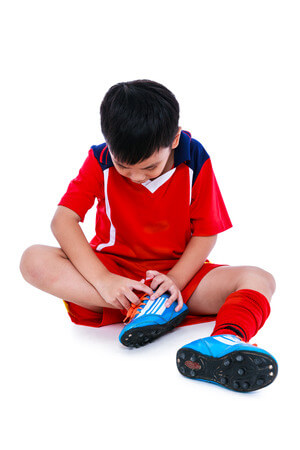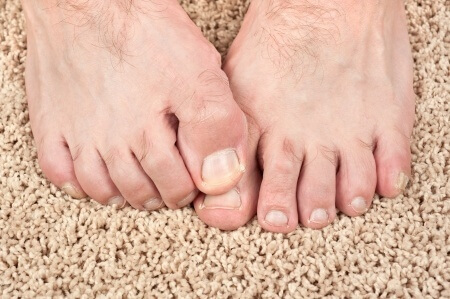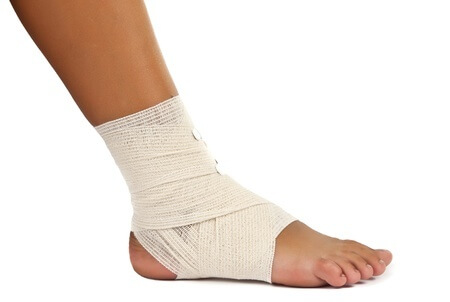Dallas (214) 340-8885
Athens (903) 677-9090
Gun Barrel City (903) 887-4341
Dallas (214) 340-8885
Athens (903) 677-9090
Gun Barrel City (903) 887-4341

It’s not easy to stay active when you have a foot or ankle injury. Most exercises you can do at home or at the gym usually involve the feet and ankles, so you may feel discouraged from physical activity. For some of you, you might be happy to have an “excuse” to not participate in exercise!
Sorry to burst your bubble, but there are alternative exercises you can try. We encourage you to keep active because it can increase circulation and promote faster recovery, as long as you allow your foot or ankle injury to rest and heal.
If your injury is not severe and you can still move your foot or ankle in low-impact exercises, try the following:
If you cannot put any weight on the feet or ankles, try some of the following:
Before starting a new workout regimen, be sure to check with our podiatrist, Dr. Jonathan M. Kletz for a proper assessment. Make an appointment today at any of our Abrams (Dallas), Athens, and Gun Barrell City, TX offices so that we can help you stay active and get back on your feet!

When it comes to your children, they shouldn’t feel pain on their feet. If they complain about pain, it usually indicates an injury or issue that should be addressed.
One of the more common complaints of pain for children is heel pain – especially if they are physically active. There are a few reasons why your child might experience heel pain, including: Sever’s Disease (Calcaneal Apophysitis), plantar fasciitis, heel spurs, Achilles tendonitis, and even fractures.
Heel pain due to Sever’s Disease. For children (between the ages of 8 to 15) with growing feet, Sever’s disease tends to be a common reason for heel pain. Usually aggravated by an injury or other repetitive impact (e.g. jumping or running in cleats), heel pain is caused by a tight Achilles tendon that pulls on the heel growth plate, which has not yet solidified. The repeated tight pulling or an injury can cause inflammation, tenderness, and pain in the rear of the heel bone.
Assessment of symptoms. A podiatrist can usually diagnose Sever’s disease by performing an assessment of the heel bone, which includes squeezing the sides of the heel. If that causes pain, it is an indication that your child might be suffering from this problem. At home, you’ll want to pay attention to your young athlete’s feet. Check for any signs of limping as that could indicate that your child is trying to ignore the pain.
Treatment of Sever’s disease. For mild cases, pain from Sever’s disease can resolve on its own as the bone hardens. If the pain is not persistent and extreme, rest and applying a cold compress can help to reduce pain and inflammation. If your child is in the middle of a season or tournament, be sure to use heel cups or orthotics, as well as stretching exercises to help prevent worsening symptoms.
For more intense pain, your child should rest the foot and not participate in sports for a couple of weeks. The heel bone may even benefit from immobilization in a boot. If your child continues to play sports, it may cause further problems that require more treatment.
Make an appointment. Do you suspect Sever’s disease to be the reason why your child is complaining of heel pain? Come see our podiatrist, Dr. Jonathan M. Kletz for a proper assessment and appropriate treatment. Make an appointment today at any of our Texas offices in Abrams (Dallas), Athens, and Gun Barrell City so that we can help your child get back on his or her feet!

Who can be affected by fungal toenails?
The fungus can infect anyone with toenails. Those with weak immune systems are less likely to be able to fight it off.
What is it?
Fungal toenails, or Onychomycosis, is a fungal infection that is caused by the same fungus tinea that results in athlete’s foot, jock itch, and ringworm. It can cause toenails to become thick, hard, yellow or gray, and brittle. They are contagious and can be unsightly.
When are you most likely to be affected?
Fungal toenails can arise when the fungus enters the skin and nails through cuts, scrapes, and/or when people have weakened immune systems. Any wounds should be treated promptly to prevent fungal, viral, and bacterial infections. Those who are sick, have poor circulation, have diabetes, or have skin conditions like eczema or psoriasis are more at risk of being affected by fungal toenails and athlete’s foot.
Where did you get it?
The tinea fungus grows in dark, damp, and warm places, such as in shoes, locker room floors, communal showers, and shared towels or toenail clippers.
Why is it important to treat?
Not only do they affect your toenail health, making them more prone to breaking, they are also embarrassing and unsightly. Additionally, you can spread them to family or other members of your gym if you fail to keep up hygienic practices, such as wearing protective footwear in communal areas and not sharing towels.
How do you treat it?
Depending on how long you’ve had the condition and how severe it is, treatment options include:
Hyperblue Laser therapy at our office (several painless treatments with no recovery period)
Are you sick of battling with fungal toenails? Come see our podiatrist, Dr. Jonathan M. Kletz for prompt treatment. Make an appointment today at any of our Abrams (Dallas), Athens, and Gun Barrell City, TX offices so that we can help you regain your nail health!

No, we are not talking about the grain, but rather, the RICE method. The letters R, I, C, and E in RICE methodstand for: Rest, Ice, Compression, and Elevation. After a foot or ankle injury, applying the RICE method can help to relieve pain and swelling symptoms. It is used until the injury heals, or if symptoms do not get better, until you can be seen by a medical professional for further treatment.
Please note: For severe injuries, especially if you suspect a broken bone or torn ligament, you should seek prompt medical attention at urgent care or the emergency department.
For mild or moderate injuries, such as a bruise from a heavy object or a sprained ankle, or even pain from overuse injuries like Achilles tendonitis or Plantar fasciitis, the RICE method can be very effective. Read on for a more detailed description of each of the components of the RICE method:
“R” is for “Rest” - Stop what you are doing. Whether it is playing a sport, walking to work, or jogging in the park, you should immediately stop and assess your injured foot or ankle. If possible, do not put weight on it and if necessary, sit down to prevent further injury.
This can also apply to resting from the activity you are doing to allow your injury to fully heal. If you were playing a sport, you may have to sit out the rest of the game, or the season to fully “rest” your foot or ankle. If you are a ballet dancer, it may mean missing the next performance or more. Look at it this way: it’s better to miss a little now, than to risk not being able to do it at all.
“I” is for “Ice” - Apply a cold compress or ice on the injured are for 15 to 20 minutes at a time. This will prevent or reduce swelling and numb some of the pain.
“C” is for “Compression” - To promote healing and reduce or prevent swelling, you can use compression socks or bandages on the injured area. Even after a few hours, you can use compression to support your injured leg until it heals.
“E” is for “Elevation” - Whenever possible, keep your injury elevated above heart level (or at least level to your hip when you are sitting). This will also prevent or reduce swelling to the injured area.
Have you experienced an injury that won’t get better within a couple days? You should consult with our podiatrist, Dr. Jonathan M. Kletz, at Texas Foot Works. He will assess your foot or ankle injury to get you the right treatment. Make an appointment today at our offices located in Abrams (Dallas), Athens, and Gun Barrell City, TX!